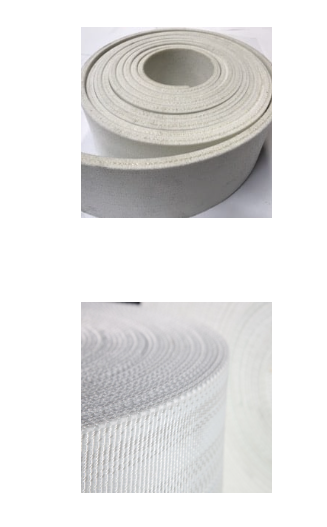Airslide fabrics are an essential component in various industries, revolutionizing material handling and enhancing efficiency. In this comprehensive guide, we will explore the applications and benefits of airslide fabrics, with a focus on simple and easy-to-understand words.
Understanding Airslide Fabrics
Before delving into their applications and benefits, let’s first grasp the concept of airslide fabrics. These fabrics are permeable membranes made from high-quality synthetic fibers. Their unique structure allows air to pass through while retaining the materials being transported. Airslide fabrics are typically used in pneumatic conveying systems to facilitate the smooth flow of powdered or granular materials.
Applications of Airslide Fabrics
Airslide fabrics find extensive use across a diverse range of industries. Let’s explore how they are employed in each sector:
1. Cement Industry:
In cement plants, airslide fabrics play a crucial role in the transportation of powdered materials like cement, fly ash, and limestone. They ensure the seamless movement of these materials during different stages of production, such as blending, storage, and packaging.
2. Food Processing Industry:
Airslide fabrics are utilized in the food processing industry for handling various food powders, such as flour, sugar, and spices. Their hygienic properties make them ideal for ensuring the smooth transfer of ingredients in food processing plants, preventing cross-contamination and maintaining product integrity.
3. Chemical Industry:
The chemical industry relies on airslide fabrics to transport powdered chemicals and minerals. These fabrics ensure the safe and efficient handling of substances like fertilizers, pigments, and catalysts, minimizing the risk of spills, segregation, and contamination.
4. Pharmaceutical Industry:
Pharmaceutical companies utilize airslide fabrics in the manufacturing of medicines and pharmaceutical powders. The fabrics enable the gentle handling of sensitive materials, preventing their degradation or alteration during transportation.
5. Others:
Apart from the aforementioned industries, airslide fabrics also find applications in sectors such as mining, plastics, and waste management. They facilitate the smooth movement of materials like plastic granules, coal, and recyclable waste, streamlining the overall operational processes.
Benefits of Airslide Fabrics
The use of airslide fabrics offers numerous advantages across various industries:
1. Enhanced Material Flow: Airslide fabrics are specifically engineered to allow air to pass through them while retaining the bulk material on top. This unique design creates a fluid-like flow, eliminating the need for mechanical systems such as belts or buckets. By eliminating the risk of blockages or material buildup, Airslide fabrics ensure a continuous and uninterrupted flow of materials, resulting in improved operational efficiency.
2. Reduced Energy Consumption: Unlike traditional conveying systems, Airslide fabrics require minimal energy to operate. Since Airslide fabrics rely on the principle of fluidization, the bulk material moves effortlessly with the assistance of air pressure. This reduction in energy consumption not only lowers operational costs but also contributes to a more sustainable and environmentally friendly approach to material handling.
3. Dust-Free Operation: One of the significant advantages of Airslide fabrics is their ability to minimize dust emissions during material handling. The permeable nature of the fabric allows excess air to escape, preventing the formation of dust clouds and potential health hazards. By ensuring a dust-free operation, Airslide fabrics create a safer working environment for employees while also reducing the need for expensive dust control measures.
4. Versatile Applications: Airslide fabrics specially from Bi-State Rubber are suitable for a wide range of industries and applications. Whether it’s handling cement, fly ash, alumina, or any other fine or granular material, Airslide fabrics offer excellent performance and reliability. Their versatility allows for easy integration into existing systems or the design of new material handling setups, providing flexibility and adaptability for various process requirements.
5. Easy Installation and Maintenance: Airslide fabrics are designed for simplicity. They are easy to install, requiring minimal downtime during the setup process. Moreover, their low-maintenance nature ensures that operational interruptions are kept to a minimum. Routine maintenance, such as cleaning or replacing worn-out sections, can be easily performed, resulting in increased uptime and overall operational efficiency.
How to Choose the Right Airslide Fabrics
When selecting airslide fabrics for your specific industry, consider the following factors:
– Permeability: The fabric’s permeability should match the requirements of the material being transported.
– Durability: Choose airslide fabrics that are durable and can withstand the harsh conditions of your industry.
– Anti-static properties: If handling materials prone to static electricity, opt for anti-static airslide fabrics.
– Compatibility: Ensure the fabric is compatible with your existing pneumatic conveying system.
Conclusion
Airslide fabrics are indispensable in industries where the smooth handling of powdered or granular materials is paramount. Their diverse applications, coupled with the numerous benefits they offer, make them a valuable asset for various sectors. By understanding their applications, benefits, and selecting the right fabric for your industry, you can optimize material handling processes and boost overall efficiency.
